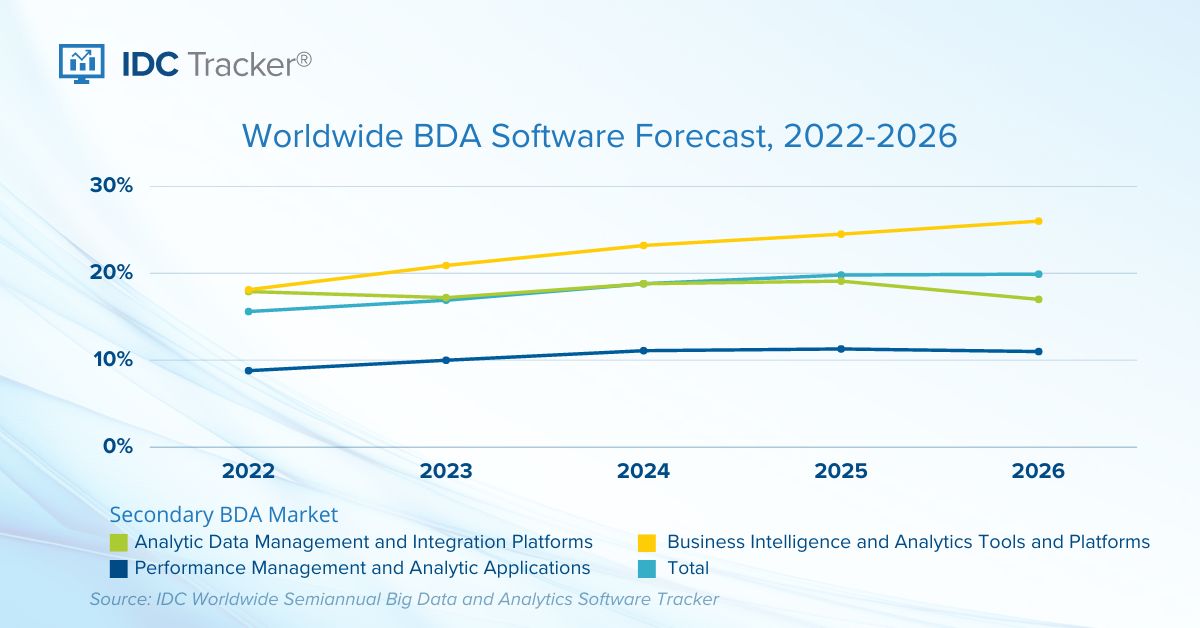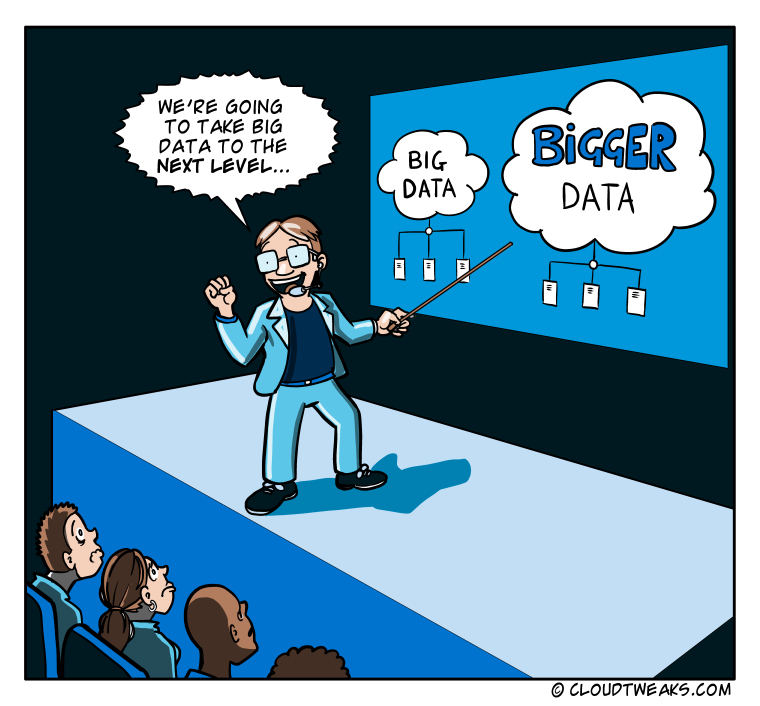Given that the users’ activity online is increasing each and everyday, the amount of data they produce is rising as well. This data is also known as big data because of the huge information volume associated with it. Big data in digital marketing is a common phenomenon because it brings lots of benefits for sales and other marketing operations. Moreover, big data analytics present marketers with prognoses and insights that could be further used in future campaigns effectively. Continue reading this article to learn more about the role and advantages of big data for digital marketing.
According to IDC’s BDA software forecast, EMEA spending is expected to improve in 2023, with 15.2% growth year on year. It will gradually catch up with the Americas and APJ, which means increasing by 2% and 4.5%, respectively. In terms of compound annual growth rate (CAGR) over the 2022-2026 period, EMEA is likely to reach 19.1%, which is a bit stronger than the Americas, but 1.4% weaker than APJ. Within the overall BDA market, business intelligence and analytics tools and platforms will record a CAGR of 23.6% over the forecast period.

What is Big Data for Marketing?
Big data is the term that comes into the everyday use of many professionals that work in the IT or digital sphere. The power of big data in digital marketing is also widely talked about, however, it is necessary to provide the definition of big data in digital marketing and in advertising first.
To determine the notion of big data in digital marketing, let’s break down this phrase into two parts. Big data comes from the information technology sector and signifies the incredible volume of information characterized by high velocity and variety. This means the collection of different data types from various digital sources occurs at high speed, which results in the growing information volume as a result.
When it comes to digital marketing, its definition does not require any clarification for specialists in the sphere. Digital marketing uses multiple methods such as a Social Media Management (Sprout Social. Hootsuite), SEO Platforms (Ahrefs, SEMRush) and Traffic Analyzers (Google Analytics, Open Web Analytics) all aimed to help boost website performance and ranking.
To define the term as a whole, let’s combine the core definitions of both sub terms together. Thus, big data for digital marketing is the utilization of a huge amount of data for analysis that would drive decisions for marketing strategies integrated online.
Using Big Data in Digital Marketing

Another question that comes out is the use and role of big data in digital marketing and sales. What exactly could big data analytics in digital marketing be used for? Which tasks does big data in digital marketing help to resolve? What role does big data play in decision making and how is it different from other instruments applied in digital marketing?
It is important to mention that big data does not substitute other methods in digital marketing but rather complements them. Big data analytics could be freely used along with and for quality link building, advertisement campaigns, and PPC marketing.
The role of big data analytics in digital marketing can’t be underestimated. Huge amounts of various data types are processed to make balanced decisions. That way, customer data analysis helps to find a personalized approach to each member of the target audience. Operations and functional data analysis help to discover white spots in the website performance and adapt SEO.
Benefits of Big Data Analytics in Marketing
As we already know what big data in digital marketing is and where it can be used, let’s get to the point and discover its advantages. Those will convince you to implement big data analytics in your business operations.
‘Know Your Customer’ (KYC) Concept
There is a modern concept called ‘know your customer’ that is widely used in today’s marketing society. Big data in digital marketing provides your business with a comprehensive understanding of your audience.
Customers’ data could be gathered in several ways, starting from information available in the local CRM systems to online cookies. In the first case, you can analyze the profiles of your current users and determine the prevalent age group, ethnicity, and other factors. Such parameters help to explore the audience you are targeting in the particular market sector. Meanwhile, cookies gather data from the websites and usually capture such online data as the time spent on the website, user’s actions, etc.
Suitability for SMBs
If you think that big data analytics is something that only big companies and corporations can use, that is not really so. Big data analytics could be used for any business, especially for small and medium-sized companies. Taking reports from Google Analytics or other marketing tools depicts how your online business activity is going. Also, you can find tools that can generate analytics data from other companies in the sector. Based on that, you will be able to adjust your business goals and strategies to stay competitive in the market.
Product Improvement
Given that the online environment provides a unique opportunity to gather data fast and instantly analyze it, the customers’ impressions about products could be understood immediately. For instance, you might set up a poll directly on your website or send a questionnaire to customers for discovering more about your products in use. Based on the obtained results, you can implement highly requested features to the product or change something based on the customers’ needs.
Audience Engagement
The power of big data analytics is that it shows where the majority of your customers come from. It could be Instagram, direct website visits, or other online sources through which your customers prefer to interact with your brand.
Real-Time Data
For some companies, the real-time data obtained from IoT sensors or GPS services could be crucial. In fact, such data shows how the company’s products perform and whether the customers’ expectations are met. This data could be used not only by the digital marketing team but also by product development, quality assurance, and other departments.
By William Nunez
